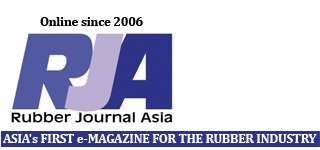Japanese firm Bridgestone recently exhibited a 100% sustainable material-produced a concept tyre at the 2012 Paris Motor Show, in line with its goal of rolling out these tyres by 2050.
Reaching the goal of 100% raw material utilisation means the world’s largest tyre maker will have to adopt a new approach to raw materials and Bridgestone says it needs to diversify the regions where it produces natural rubber in order to meet the target.
It is also expanding the range of reinforced plant fibres it uses. For the concept tyre, it used synthesised biomass-sourced substitutes for synthetic rubber, carbon black and rubber compounding agents – ingredients traditionally produced from fossil resources. Bridgestone has set 2020 as a target for the commercial sale of “certain sustainable materials used in the manufacturing process.”
Bridgestone intends to supplement the para rubber tree-sourced natural rubber it uses with rubber from the guayule plant, while cellulosic fibre will supplement or replace rayon as a reinforcing fibre. Meanwhile, petroleum-based synthetic rubber, curing agents, anti-ageing chemicals and reinforcing fillers will be substituted by equivalent materials made from biomass, vegetable fats and oils. (RJA)

